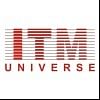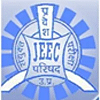Table of Contents
JUST 2024 syllabus will help applicants prepare for the exam effectively. Thus, candidates must go through the JUST 2024 syllabus before preparing for the same. Knowing the syllabus can help the candidates understand the overview of how the topics have been distributed and prepare for the exam accordingly.
The Jain University Scholarship Test papers include questions based on the 10+2 syllabus in Physics, Chemistry, Mathematics, and General English, followed by major 10+2 Boards/ universities.
JUST 2024 Syllabus
The JUST 2024 syllabus is set and released by its organizing body. Candidates are required to go through the syllabus thoroughly prior to starting the preparation for the exam. Understanding and knowing the syllabus prior to the preparation will allow the candidates to have a clear insight into the topics that will be asked in the exam and their distribution throughout the different lessons and subjects.
With the help of this clear understanding, they can prepare well for the exam. Candidates must visit this page regularly to make sure to know the syllabus very clearly and also to keep track of any changes or updates related to the JUST 2024 syllabus.
Sections: The different sections of class XI and class XII will be covered in the JUST 2024 exam.
Syllabus: The syllabus of the JUST 2024 exam will be Physics, Chemistry, Mathematics, and English.
JUST 2024 Subject-Wise Syllabus
The subject-wise syllabus for all the papers is given below for candidates' reference. The topics included in the JUST 2024 syllabus are from class 12 topics that all students have studied in the school.
JUST 2024 Syllabus for Mathematics
The syllabus for the Mathematics subject is elaborated below topic and subtopic-wise.
| Topics | Contents |
| Applications Of Matrices and Determinants | Adjoint, Inverse –Properties Computation of Inverses The Solution of a System of Linear Equations by Matrix Inversion Method The Rank of a Matrix Elementary Transformation on a Matrix Consistency of a System of Linear Equations Cramer’s Rule Non-Homogeneous Equations Homogeneous Linear System Rank Method. |
| Vector Algebra | Scalar Product – Angle Between Two Vectors Properties of a Scalar Product Applications of Dot Products Vector Product − Right-handed and Left-handed Systems Properties of Vector Product Applications of the Cross Product The Product of Three Vectors − Scalar Triple Product Properties of a Scalar Triple Product Vector Triple Product Vector Product of Four Vectors Scalar Product of Four Vectors Lines − Equation of a Straight Line Passing Through a Given Point and Parallel to a Given Vector Passing through Two Given Points (Derivations are not required). The Angle Between Two Lines Skew Lines − Shortest Distance Between Two Lines Condition for Two Lines to Intersect A Point of Intersection Collinearity of Three Points Planes − Equation of a Plane (Derivations are not required) Passing Through a Given Point and Perpendicular to a Vector Given the Distance from the Origin and Unit Normal Passing Through a Given Point and Parallel to Two Given Vectors Passing Through Two Given Points and Parallel to a Given Vector Passing Through Three Given Non-Collinear Points Passing Through the Line of Intersection of Two Given Planes The Distance Between a Point and a Plane The Plane which Contains Two Given Lines Angle Between Two Given Planes Angle Between a Line and a Plane Sphere − Equation of the Sphere (Derivations are not required) whose Center and Radius are Given An Equation of a Sphere when the Extremities of the Given |
| Complex Numbers | Complex Number System Conjugate − Properties, Ordered Pair Representation Modulus − Properties, Geometrical Representation, Meaning, Polar Form, Principal Value, Conjugate, Sum, Difference, Product, Quotient Vector Interpretation Solutions of Polynomial Equations De Moivre’s Theorem and its Applications Roots of a Complex Number − nth Roots, Cube Roots, Fourth Roots |
| Analytical Geometry | b)nOther Standard Form of the Ellipse, General Forms, Some Practical ProblemsnHyperbola −Standard Equation (derivation and tracing the hyperbola are not required)nx2/a2 −y2/b2=1nOther Form of the Hyperbola, Parametric Form of Conics, ChordsnTangents and Normals − Cartesian Form and Parametric FormnAn Equation of Chord of Contact of Tangents from a Point (x1, y1)nAsymptotesnRectangular Hyperbola – Standard Equation of a Rectangular Hyperbola"}">Definition of a Conic − General Equation of a Conic, Classification with Respect to the General Equation of a Conic, Classification of Conics with Respect to Eccentricity Parabola − Standard Equation of a Parabola (Derivation and Tracing the Parabola are not required) Other Standard Parabolas The Process of Shifting the Origin The General Form of the Standard Equation Some Practical Problems Ellipse − Standard Equation of the Ellipse (Derivation and Tracing the Ellipse are not required) x2/a2 + y2/b2 = 1, (a > b) Other Standard Form of the Ellipse, General Forms, Some Practical Problems Hyperbola −Standard Equation (derivation and tracing the hyperbola are not required) x2/a2 −y2/b2=1 Other Form of the Hyperbola, Parametric Form of Conics, Chords Tangents and Normals − Cartesian Form and Parametric Form An Equation of Chord of Contact of Tangents from a Point (x1, y1) Asymptotes Rectangular Hyperbola – Standard Equation of a Rectangular Hyperbola |
| Differential Calculus– Applications 1 | Derivative as a Rate Measure − Rate of Change − Velocity − Acceleration − Related Rates Derivative as a Measure of Slope − Tangent, Normal and An Angle Between Curves Maxima and Minima Mean Value Theorem Rolle’s Theorem Lagrange Mean Value Theorem Taylor’s and Maclaurin’s Series L’ Hôpital’s Rule Stationary Points − Increasing, Decreasing Maxima, Minima, Concavity Convexity, Points of Inflection |
| Differential Calculus– Applications 2 | Errors and Approximations Absolute, Relative, Percentage Errors Curve Tracing Partial Derivatives Euler’s Theorem |
| Integral Calculus And Its Applications | Properties of Definite Integrals Reduction Formulae for sin x and cos n x (only results) Area, Length |
| Differential Equations | Formation of Differential Equations, Order, and Degree Solving Differential Equations (1st order) Variable Separable Homogeneous Linear Equations Second Order Linear Equations with Constant Coefficients f(x) = e me, sin mx, cos mx, x, x 2 |
| Discrete Mathematics | Mathematical Logic − Logical Statements, Connectives, Truth Tables, Tautologies |
| Groups | Binary Operations Semi Groups Monoids, Groups (Problems and Simple Properties Only) An Order of a Group Order of an Element |
| Probability Distributions | Random Variable Probability Density Function Distribution Function Mathematical Expectation Variance Discrete Distributions − Binomial, Poisson, Continuous Distribution − Normal Distribution |
JUST 2024 Syllabus for Chemistry
The Chemistry syllabus for the JUST 2024 exam is given below topic-wise.
| Topics | Contents |
| Atomic Structure 2 | Dual Properties of Electrons De-Broglie Relation Heisenberg’s Uncertainty Principle Wave Nature of an Electron Schrodinger Wave Equation (Only Equation, No Derivation) Eigen Values and Eigen Function - Significance Only Molecular Orbital Method. Application to Homo Diatomic and Hetero Diatomic Molecules Metallic Bond Hybridization of Atomic Orbitals Hybridization involving s, p, and d Orbitals Types of Forces Between Molecules |
| Periodic classification 2 | Review of Periodic Properties Calculation of Atomic Radii Calculation of Ionic Radii Method of Determination of Ionisation Potential Factors Affecting Ionization Potential Method to Determine the Electron Affinity Factors Affecting EA Various Scales on Electronegativity Values |
| p - Block Elements | Group -13 General Trends - Potash Alum Preparation, Properties and Uses Group 14 General Trends Silicates - Types and Structure Silicones - Structure and Uses Extraction of Lead Group - 15 General Trends Phosphorous- Allotropes and Extraction Compounds of Phosphorous Group - 16 General Trends - H2 SO4 Manufacture and Properties Group - 17 General Characteristics Physical and Chemical Properties Isolation of Fluorine and its Properties Interhalogen Compounds Group-18 Inert Gases - Isolation, Properties and Uses |
| d - Block Elements | General Characteristics of d-Block Elements First Transition Series Occurrence and Principles of Extraction - Chromium, Copper and Zinc Alloys Second Transition Series Occurrence and Principles of Extraction of Silver Third Transition Series Compounds - K2 Cr2 O7 , CuSO4 5H2 O, AgNO3 , Hg2 Cl2 , ZnCO3 Purple of Cassius Unit 5 - f-Block Elements General Characteristics of f - Block Elements and Extraction Comparison of Lanthanides and Actinides Uses of Lanthanides and Actinides. |
| Coordination Compounds and Bio-coordination Compounds | Introduction Terminology in Coordination Chemistry IUPAC Nomenclature of Mononuclear Coordination Compounds Isomerism in Coordination Compounds Structural Isomerism Geometrical Isomerism in 4 - Coordinate, 6 – Coordinate Complexes Theories on Coordination Compounds - Werner’s Theory (Brief) - Valence Bond Theory - Crystal Field Theory Uses of Coordination Compounds Biocoordination Compounds Haemoglobin and Chlorophyll. |
| Nuclear Chemistry | Nuclear Energy Nuclear Fission and Fusion Radiocarbon Dating Nuclear Reaction in Sun Uses of Radioactive Isotopes. |
| Solid State 2 | Types of Packing in Crystals X-Ray Crystal Structure Types of Ionic Crystals Imperfections in Solids Properties of Crystalline Solids Amorphous Solid. |
| Thermodynamics 2 | Review of I Law Need for the II Law of Thermodynamics Spontaneous and Nonspontaneous Processes Entropy Gibb’s Free Energy Free Energy Change and Chemical Equilibrium Third Law of Thermodynamics. |
| Chemical Equilibrium 2 | Applications of a Law of Mass Action Le Chatlier’s Principle |
| Chemical Kinetics 2 | First Order Reaction and Pseudo First Order Reaction Experimental Determination of the First-Order Reaction Method of Determining an Order of Reaction Temperature Dependence of Rate Constant Simple and Complex Reactions. |
| Surface Chemistry | Adsorption Catalysis Theory of Catalysis Colloids Preparation of Colloids Properties of Colloids Emulsions. |
| Electrochemistry 1 | Conductors, Insulators and Semiconductors Theory of Electrical Conductance Theory of Strong Electrolytes Faraday’s Laws of Electrolysis Specific Resistance Specific Conductance Equivalent and Molar Conductance Variation of Conductance with Dilution Kohlraush’s Law Ionic Product of Water, pH and pOH Buffer Solutions Use of pH Values |
| Electrochemistry 2 | Cells - Electrodes and Electrode Potentials Construction of Cell and EMF Corrosion and its Preventions Commercial Production of Chemicals Fuel Cells. |
| Isomerism in Organic Chemistry | Geometrical Isomerism Conformations of Cyclic Compounds Optical Isomerism Optical Activity Chirality Compounds Containing Chiral Centers D-L and R-S Notation Isomerism in Benzene. |
| Hydroxy Derivatives | Nomenclature of Alcohols Classification of Alcohols General Methods of Preparation of Primary Alcohols Properties Methods of a Distinction Between Three Classes of Alcohols 1°, 2° and 3° Methods of Preparation of Dihydric Alcohols (Glycol) - Properties - Uses Methods of Preparation of Trihydric Alcohols - Properties - Uses Aromatic Alcohols - Methods of Preparation of Benzyl Alcohol Properties - Uses - Phenols Manufacture of Phenols - Properties Chemical Properties Uses of Phenols. |
| Ethers | Ethers General Methods of Preparation of Aliphatic Ethers - Properties - Uses Aromatic Ethers - Preparation of Anisole Reactions of Anisole - Uses. |
| Carbonyl Compounds | Nomenclature of Carbonyl Compounds Comparison of Aldehydes and Ketones General Methods of Preparation of Aldehydes - Properties - Uses Aromatic Aldehydes Preparation of Benzaldehyde - Properties - Uses Ketones General Methods of Preparation of Aliphatic Ketones (Acetone) - Properties - Uses Aromatic Ketones - Preparation of Acetophenone- Properties - Uses Preparation of Benzophenone - Properties. |
| Carboxylic Acids | Nomenclature Preparation of Aliphatic Monocarboxylic Acids Formic Acid - Properties - Uses Tests for Carboxylic Acid Monohydroxy Mono Carboxylic Acids Lactic Acid – Sources Synthesis of Lactic Acid Aliphatic Dicarboxylic Acids Preparation of Dicarboxylic Acids Oxalic and Succinic Acids - Properties Strengths of Carboxylic Acids Aromatic Acids Preparation of Benzoic Acid - Properties - Uses Preparation of Salicylic Acid - Properties - Uses Derivatives of Carboxylic Acids Preparation of Acid Chloride – Acetyl Chloride (CH3 COCl) - Preparation - Properties - Uses Preparation of Acetamide - Properties Preparation of Acetic Anhydride - Properties Preparation of Esters Methyl Acetate - Properties. |
| Organic Nitrogen Compounds | Aliphatic Nitro Compounds Preparation of Aliphatic Nitroalkanes - Properties - Uses Aromatic Nitro Compounds - Preparation - Properties - Uses Distinction Between Aliphatic and Aromatic Nitro Compounds Amines - Aliphatic Amines - General Methods of Preparation - Properties Distinction Between 1°, 2°, and 3° Amines - Aromatic Amines Synthesis of Benzylamine - Properties Aniline –Preparation - Properties - Uses Distinction Between Aliphatic and Aromatic Amines Aliphatic Nitriles - Preparation - Properties - Uses Diazonium Salts - Preparation of Benzene Diazoniumchloride - Properties. |
| Biomolecules | Carbohydrates Structural Elucidation Disaccharides and Polysaccharides Proteins Amino Acids A Structure of Proteins Nucleic Acids Lipids. |
| Chemistry in Action | Medicinal Chemistry Drug Abuse Dyes – Classification and Uses Cosmetics – Creams, Perfumes, Talcum Powder and Deodorants Chemicals in Food - Preservatives Artificial Sweetening Agents, Antioxidants and Edible Colors Insect Repellant – Pheromones and Sex Attractants Rocket Fuels - Types of Polymers, Preparation and Uses. |
JUST 2024 Syllabus for Physics
The Physics subject for the JUST 2024 exam is given below topic-wise.
| Topics | Contents |
| Electrostatics | Frictional Electricity Charges, and their Conservation Coulomb’s Law – Forces Between Two Point Electric Charges Forces Between Multiple Electric Charges Superposition Principle Electric Field Electric Field Due to a Point Charge Electric Field Lines Electric Dipole Electric Field Intensity Due to a Dipole Behavior of Dipole in a Uniform Electric Field Application of Electric Dipole in a Microwave Oven Electric Potential Potential Difference Electric Potential Due to a Point Charge and Due to a Dipole Equipotential Surfaces Electrical Potential Energy of a System of Two Point Charges Electric Flux Gauss’s Theorem and its Applications to Find Field Due to (1) Infinitely Long Straight Wire (2) Uniformly Charged Infinite Plane Sheet (3) Two Parallel Sheets and (4) Uniformly Charged Thin Spherical Shell (Inside and Outside) Electrostatic Induction Capacitor and Capacitance Dielectric and Electric Polarisation Parallel Plate Capacitor With and Without Dielectric Medium Applications of Capacitor Energy Stored in a Capacitor Capacitors in Series and in Parallel – Action of Points – Lightning Arrester Van de Graaff Generator. |
| Current Electricity | Electric Current Flow of Charges in a Metallic Conductor Drift Velocity and Mobility and their Relation to Electric Current Ohm’s Law Electrical Resistance V-I Characteristics Electrical Resistivity and Conductivity Classification of Materials in Terms of Conductivity Superconductivity (Elementary Ideas) Carbon Resistors Color Code for Carbon Resistors Combination of Resistors Series and Parallel Temperature Dependence of Resistance Internal Resistance of a Cell Potential Difference and EMF of a Cell Kirchoff’s Law Illustration by Simple Circuits Wheatstone’s Bridge and its Application for the Temperature Coefficient of Resistance Measurement Metre Bridge Special Case of Wheatstone Bridge Potentiometer - Principle Comparing the EMF of Two Cells Electric Power Chemical Effect of Current Electro Chemical Cells Primary (Voltaic, Lechlanche, Daniel) – Secondary – Rechargeable Cell – Lead-Acid Accumulator |
| Effects of Electric Current | Heating Effect Joule’s Law – Experimental Verification. Thermoelectric Effects – Seebeck Effect – Peltier Effect – Thomson Effect – Thermocouple, Thermo EMF, Neutral and Inversion Temperature. Thermopile Magnetic Effect of Electric Current – Concept of Magnetic Field Oersted’s Experiment Biot-Savart Law Magnetic Field Due to an Infinitely Long Current Carrying Straight Wire and Circular Coil Tangent Galvanometer – Construction and Working Bar Magnet as an Equivalent Solenoid – Magnetic Field Lines. Ampere’s Circuital Law and its Application Force on a Moving Charge in a Uniform Magnetic Field and Electric Field – Cyclotron – Force on Current Carrying Conductor in a Uniform Magnetic Field Forces Between Two Parallel Current Carrying Conductors – Definition of Ampere. Torque Experienced by a Current Loop in a Uniform Magnetic Field-Moving Coil Galvanometer – Conversion to Ammeter and Voltmeter Current Loop as a Magnetic Dipole and its Magnetic Dipole Moment Magnetic Dipole Moment of a Revolving Electron |
| Electromagnetic Induction and Alternating Current | Electromagnetic Induction Faraday’s Law Induced EMF and Current Lenz’s Law. Self-induction Mutual Induction Self-inductance of aLong Solenoid Mutual Inductance of Two Long Solenoids Methods of Inducing EMF– (1) By Changing Magnetic Induction (2) By Changing Area Enclosed by the Coil and (3) By Changing the Orientation of the Coil (Quantitative Treatment) Analytical Treatment can also be included. AC Generator Commercial Generator (Single Phase, Three Phase) Eddy Current – Applications Transformer Long Distance Transmission Alternating Current Measurement of AC AC Circuit Resistance AC Circuit Inductor AC Circuit with a Capacitor LCR Series Circuit Resonance and Q – Factor Power in AC Circuits. |
| Electronics Waves and Wave Optics | Electromagnetic Waves and their Characteristics – Electromagnetic Spectrum, Radio, Microwaves, Infrared, Visible, Ultraviolet – X-Rays, Gamma Rays Emission and Absorption Spectrum – Line, Band, and Continuous Spectra – Fluorescence and Phosphorescence. Theories of Light – Corpuscular – Wave – Electromagnetic and Quantum Theories. Scattering of Light – Rayleigh’s Scattering – Tyndal Scattering – Raman Effect – Raman Spectrum – Blue Color of the Sky and Reddish Appearance of the Sun at Sunrise and Sunset. Wavefront and Huygen’s Principle Reflection Total Internal Reflection, and Refraction of Plane Wave at a Plane Surface Using Wavefronts Interference – Young’s Double Slit Experiment and Expression for Fringe Width Coherent Source - Interference of Light. Formation of Colors in Thin Films Analytical Treatment Newton’s Rings Diffraction – Differences Between Interference and Diffraction of Light – Diffraction Grating Polarisation of Light Waves – Polarisation by Reflection –Brewster’s Law - Double Refraction - Nicol Prism – Uses of Plane Polarised Light and Polaroids – Rotatory Polarisation – Polarimeter. |
| Atomic Physics | Atomic Structure Discovery of the Electron Specific Charge (Thomson’s Method) and Charge of the Electron (Millikan’s Oil Drop Method) Alpha Scattering Rutherford’s Atom Model Bohr’s Model Energy Quantization Energy and Wave Number Expression Hydrogen Spectrum Energy Level Diagrams Sodium and Mercury Spectra Excitation and Ionization Potentials Sommerfeld’s Atom Model X-Rays – Production, Properties, Detection, Absorption, Diffraction of X-Rays Laue’s Experiment Bragg’s Law Bragg’s X-Ray Spectrometer X-Ray Spectra – Continuous and Characteristic X-Ray Spectrum Mosley’s Law and Atomic Number Masers and Lasers Spontaneous and Stimulated Emission Normal Population and Population Inversion Ruby Laser, He–Ne Laser – Properties and Applications of Laser Light – Holography |
| Dual Nature Of Radiation and Matter Relativity | Photoelectric Effect Light Waves and Photons Einstein’s Photoelectric Equation Laws of Photoelectric Emission Particle Nature of Energy Photoelectric Equation Work Function Photocells and their Application Matter Waves Wave Mechanical Concept of the Atom Wave Nature of Particles De–Broglie Relation De–Broglie Wave Length of an Electron-Electron Microscope The Concept of Space, Mass, Time – Frame of References Special Theory of Relativity Relativity of Length, Time and Mass with Velocity – (E = mc 2). |
| Nuclear Physics | Nuclear Properties Nuclear Radii, Masses Binding Energy, Density, Charge Isotopes, Isobars, and Isotones Nuclear Mass Defect Binding Energy. Stability of Nuclei-Bain Bridge Mass Spectrometer Nature of Nuclear Forces Neutron – Discovery – Properties – Artificial Transmutation Particle Accelerator Radioactivity - Alpha, Beta and Gamma Radiations and their Properties α-Decay, β-Decay, and γ-Decay – Radioactive Decay Law – Half-Life – Means Life Artificial Radioactivity Radio Isotopes – Effects and Uses Geiger Muller Counter Radiocarbon Dating Biological Radiation Hazards Nuclear Fission Chain Reaction Atom Bomb Nuclear Reactor Nuclear Fusion Hydrogen Bomb Cosmic Rays Elementary Particles |
| Semiconductor Devices and their Applications | Semiconductor Theory Energy Band in Solids Difference Between Metals, Insulators, and Semiconductors Based on Band Theory Semiconductor Doping Intrinsic and Extrinsic Semiconductors Formation of P-N Junction Barrier Potential and Depletion Layer. P-N Junction Diode – Forward and Reverse Bias Characteristics – Diode as a Rectifier – More Zen Diode Zener Diode as a Voltage Regulator – LED Junction Transistors – Characteristics Transistor as a Switch Transistor as an Amplifier Transistor Biasing – RC, LC Coupled and Direct Coupling in Amplifier Feedback Amplifier – Positive and Negative Feedback – Advantages of Negative Feedback Amplifier Oscillator – Condition for Oscillations LC Circuit Colpitts Oscillator. Logic Gates – NOT, OR, AND, EXOR using Discrete Components NAND and NOR Gates as Universal Gates – Integrated Circuits Laws and Theorems of Boolean’s Algebra Operational Amplifier – Parameters Pin-out Configuration – Basic Applications Inverting Amplifier Non-Inverting Amplifier – Summing and Difference Amplifiers Measuring Instruments Cathode Ray Oscilloscope – Principle – Functional Units – Uses Multimeter – Construction and Uses. |
| Communication Systems | Modes of Propagation Ground Wave – Skywave Propagation Amplitude Modulation, Merits, and Demerits – Applications Frequency Modulation – Advantages and Applications Phase Modulation Antennas and Directivity Radio Transmission and Reception – AM, and FM Superheterodyne Receiver T.V.Transmission and Reception – Scanning and Synchronizing Vidicon (Camera Tube) and Picture Tube Block Diagram of a Monochrome TV Transmitter and Receiver Circuits Radar – Principle – Applications Digital Communication Data Transmission and Reception Principles of Fax Modem Satellite Communication – Wire, Cable, and Fibre Optical Communication. |
JUST 2024 Syllabus for General English
This paper includes questions on general English like spotting the errors, sentence improvement, vocabulary, synonym, antonym, etc. Candidates can go through the topics accordingly.


















